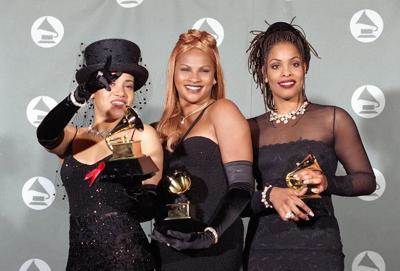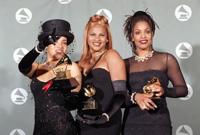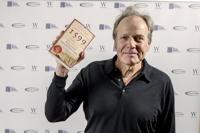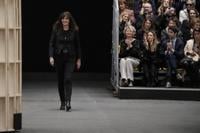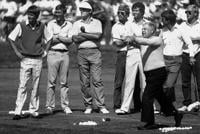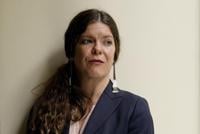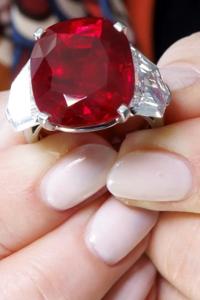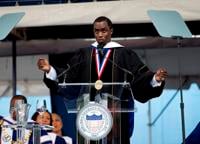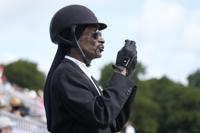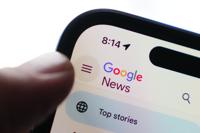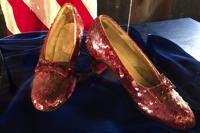ATLANTA (AP) — Rasheeda Frost’s relationship with hip-hop started in 1981.
She was a kindergartener when her mother gave her a record player, and she would continuously spin it, not knowing what it was. Then her mom gave her a record from The Sugarhill Gang.
“She must’ve just known hip-hop was embedded in me at such a young age,” the MTV “Love and Hip-Hop: Atlanta” reality star said.
“I played that record until I tore it up.”
Frost fell in love with hip-hop. Lyrics, music videos, and magazine covers display a genre that is male-centered and male-dominated. But Frost took her passion a step further and joined the ranks of female rappers and emcees who battled , sexism, and patriarchy to send hip-hop spinning in a different direction.
“I had to go out there and work triple as hard, make sure I’m respected, not get taken advantage of as a female, and really go hard for what I know and stand for something,” Frost said.
From The Sequence releasing the first rap record by an all-female group in 1979, to MC Sha-Rock’s iconic performance on “SNL” as a part of Funky 4+1, female rappers have always been a part of hip-hop.
Women have gone from donning a male-imitated aesthetic, to owning their sexuality in lyrics, to selling out stadiums. At hip-hop’s 50th anniversary, female rappers are taking their moment to shine — while still demanding respect and facing challenges.
Msia Kibona Clark, an African culture and feminist studies professor at Howard University, said women were “largely invisible” in hip-hop during the ’80s and early ’90s.
“Early on the idea was to imitate men in terms of the aesthetics, and the idea was the hip-hop uniform — baggy clothes and sneakers and t-shirts,” said Clark.
Clark said early female rappers had the challenge of navigating sexism and sexual harassment, as well as carving out a perspective that often wasn’t heard.
In an interview with The Associated Press, hip-hop icon Queen Latifah called it “the dark ages of hip-hop because it just wasn’t enough women voices.”
SiriusXM host Roxanne Shante started entering rap as a young teen in the 1980s. The hip-hop legend’s battle tracks solidified her as one of the earliest and fiercest emcees at the age of 14.
“I came in as little sis; even to the point of where sometimes they didn’t even want to let me participate, because sometimes the men felt that I was that good,” Shante told the AP.
Entertainer and philanthropist Yo-Yo was known for rapping about female empowerment and demanding respect, but she still dealt with having to “stay in a woman’s place.”
“Those were some of the challenges when the record labels only respected men,” Yo-Yo said.
Female emcees found themselves having to defend the genre as well as prove themselves worthy of holding the mic.
“When there was negativity or any kind of misogyny, it only pushed us even more,” said DJ Spinderella, a member of the hip-hop group Salt-N-Pepa. “Our first goal was to shake our thing, but then the fact that we were inspiring women to become their better selves despite the negative was important.”
By the late ’90s and early 2000s, women were becoming more visible in hip-hop. Female artists offered a variety of sounds from Lauryn Hill to Missy Elliott.
But challenges persisted. As more women entered, some were uniting on hit records such as “Ladies Night,” while others were pitted against each other. The hypersexualization of women was also ramping up.
Although female rappers have pushed sex positive lyrics since the ’80s, the mid-to-late ’90s saw the advent of artists such as Lil’ Kim and Foxy Brown more overtly displaying and owning their sexuality. This drew controversy — and hypocrisy.
“When I came out with songs like ‘Make It Vibrate’ and songs like ‘Georgia Peach’, I got a lot of resistance from radio because they said it was too sexy,” said Frost, who released her first album “Dirty South” in 2001. “It was a battle every single day just to be heard, to be respected.”
As rap continued to evolve, rappers such as Remy Ma and Trina continued to hold down the booth. Nicki Minaj’s impact on the genre was explosive in the 2010s — as reflected by her winning the BET Awards best female hip hop artist from 2010 through 2016.
The late 2010s saw a change in technology. Internet access gave rise to a new era of artists using social media as a way to gain traction. Hip-hop became bigger in pop culture and hip-hop artists became the faces of popular brands and fashion labels.
The shifting pop culture landscape, along with the tenacious work of female rap pioneers, helped pave the way for an explosion of female rappers and artists.
“I love it. I think that we have our own table. We just don’t have to get in to fit in. I think women are making powerful moves,” said Yo-Yo.
The theme of female empowerment remains but the message has changed — with artists such as Megan thee Stallion and the City Girls rapping about sexual liberation and hypergamous values, as well as women having their own money.
The pervasiveness of misogyny and patriarchal violence still threatens the existence of female rappers. Some experts think that female rap is more hyper-sexualized than ever before.
There’s also a push for more femme-presenting queer and non-binary artists to have a platform in a genre that has been largely homophobic and heteronormative since its inception.
“My hopes for the future of hip-hop is to definitely see more queer people in the mainstream,” said Itz(asterisk)Nobi, a femme-presenting non-binary rapper. “We definitely have such an interesting angle to share as far as just humanity and being a person.”
—�Ĕ�Ĕ-
AP Entertainment Writer Jonathan Landrum Jr. contributed from Los Angeles.

